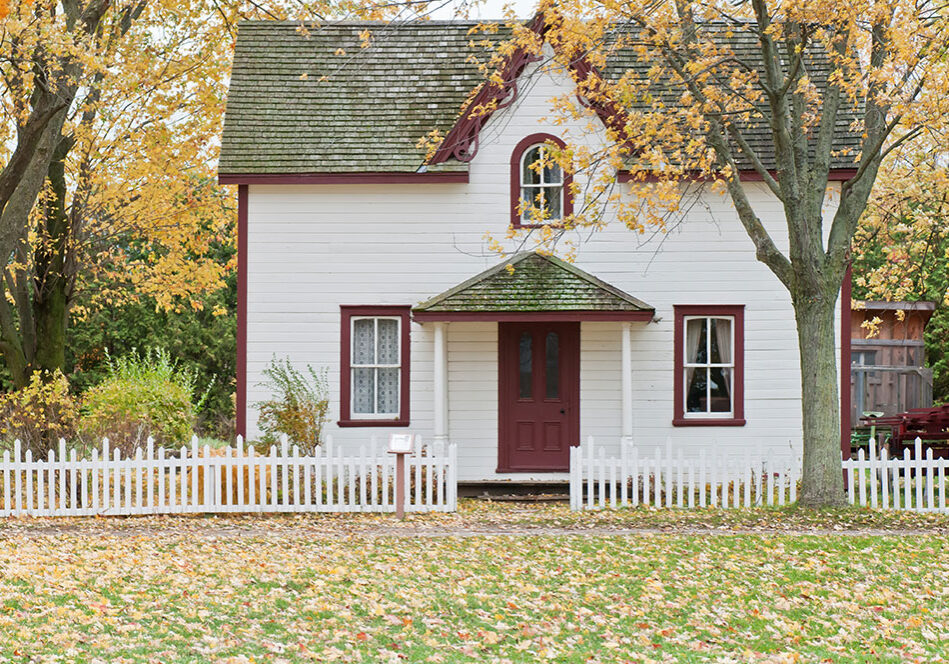7 To-Dos During A Final Walk-Through
You’re in the home stretch, and it’s an exciting feeling. You have found the perfect house, gotten your loan in order, made your offer and the seller has accepted. Inspections have been performed, and you can’t wait to move in. Before you crack out the celebratory bubbly, however, there is one last step to take – the final walk-through.
This may seem like a minimal task, but if you don’t approach it as a serious step in the home buying process, you are setting yourself up for potential headaches.
The point of the final walk-through is to ensure that the condition of the property has not changed since the last visit and that any terms or repairs in the contract have been met. In all the excitement surrounding closing, it’s understandable to assume everything will be fine and taken care of.
Here at Accunet, however, we’ve seen this oversight come back to haunt new buyers. As with the entire home-buying process, you need to be educated and prepared.
To help you along the way we’ve compiled a list of 7 important to-dos to perform before officially closing on your new home.
1. Timing
The final walk-through should be arranged by your real estate agent to happen within 1 week of the closing date but preferably within the last 3 days before closing. Having it close to the closing date will leave much less room for surprises to occur, like unexpected damage to the home during moving.
2. Take Your Contract With You
The inspection has already been performed, and you’ll want to make sure that the appropriate fixes were made. You can bring the home inspector along if you wish to ensure that any fixes made were done correctly. Your agreement will also have many other details that you may want to have handy for reference. If you had in the contract that the homeowner was to leave large appliances, like a washer and dryer, you’ll want to make sure it’s still there and have the documents to back it up.
3. Check All Outlets & Appliances
This can be slightly time-consuming and tedious work, but it’ll be worth it. Bring an electrical tester, or simply a phone charger, to make sure all electrical outlets are working properly. You’ll also want to test all appliances, light switches, heating, air conditioning, garbage disposals, fans, garage door, and any other mechanical device that will be yours once you close.
4. Check the Plumbing
The home inspection should have identified any major problems with the plumbing, but this is your last chance to make sure there are no issues before the home is officially yours. Flush all the toilets and check the faucets. Additionally, you’ll want to check under the sinks for any leaks that potentially went unnoticed before.
5. Take a Look at the Outside
Taking a look around your property is an important step because you’ll want to make sure that it’s the same as what was agreed upon. There could be plants or a shed removed by the owner that was supposed to be left. If you don’t notice until after you close, then you’re out of luck.
6. Double-check Storage Areas
Oftentimes, homeowners will leave cans of paint, propane tanks, or other things they assume you’ll want once you move in. If you do want these then great, but if you don’t want them and have to dispose of them yourself, you may set yourself up for a headache as many common items that are left behind have detailed instructions on how to dispose of them that will take time and potentially money to take care of.
7. Talk to the Owner
If possible, it’s helpful to have the homeowner available at the final walk-through to discuss the history of the home and any little tricks or secrets that the households have. Maybe there’s a trick to accessing the attic properly or countless other things. Nobody knows this property better than the current owner so it would be helpful to hear from the source.
This list isn’t all-encompassing, but it will help prepare you for your final walk-through before closing on your brand new house. Again, there often will be no issues, but sometimes there are. In this case, you should talk to your real estate agent about the best way to move forward so that there will be no unwanted surprises when you move in. Now instead of moving into a house of issues, you can move into your well-inspected new house and begin making it your home.
Want the Lowest Rate on Your Home Loan?
Let's Get Started!
You Might Also Like
Aenean sollicitudin egestas elit vel mattis. Proin non lorem arcu. Sed ornare venenatis sapien id iaculis. Etiam ultricies interdum commodo. Aliquam erat volutpat.


